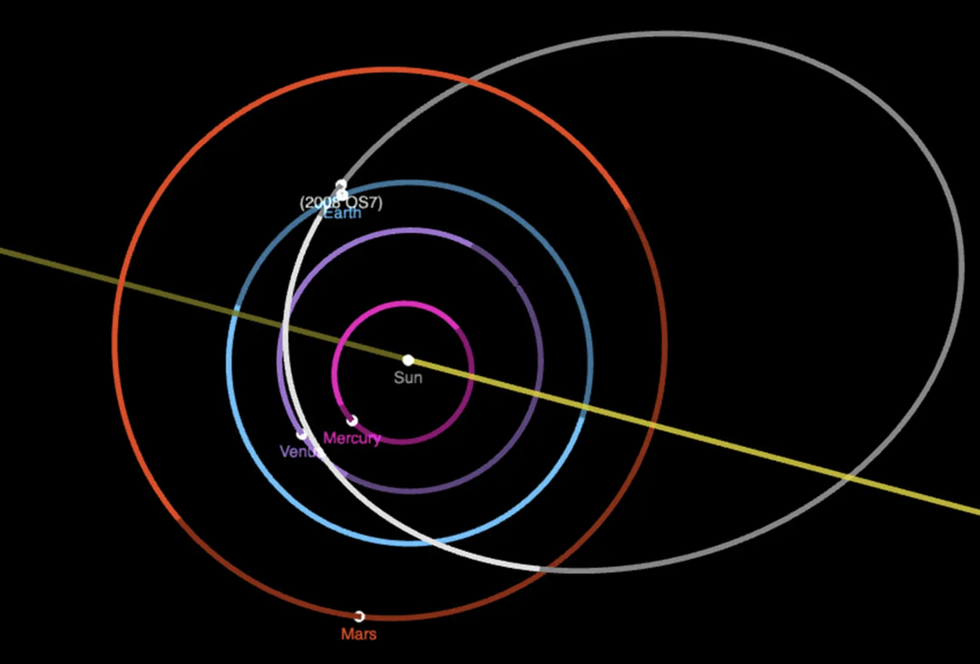Nasa has placed the space rock, as well as four others on 'asteroid watch'
Don't Miss
Most Read
Trending on GB News
An asteroid the size of a sports stadium zipped past the earth earlier this week, prompting Nasa to put it on "asteroid watch."
Asteroid 2008 OS7, which is approximately 890 feet in diameter, is one of five asteroids passing the UK and is expected to get closest to earth on February 2.
Despite the fact that there's no chance of any collision as it is expected to miss us by 1.77 million miles, its distance is still cutting it close enough to land it on the Nasa Jet Propulsion Laboratory’s Asteroid Watch website, which tracks the next five asteroid approaches.
The 2008 OS7’s near miss will cap off a week that will see a volley of other asteroids passing a bit too close to comfort to the world as we know it.

The largest of the five asteroids is about the size of a sports stadium
NASA
On Sunday, 2024 AU4, a “building-size” asteroid approximately 260 feet in diameter, will miss the Earth by approximately 3.92 million miles at its closest point.
Then, on Tuesday, 2007 EG will pass a bit closer, the “airplane-size” asteroid expected to sail by at a distance of around 3.8 million miles.
The asteroid expected to be the closest call this week will be on Thursday, when Asteroid 2024 BY, which Nasa describes as approximately the size of a house, will come within 1.57 million miles.
Later on the same day another airplane-size asteroid, 2003 BM4, some 120 feet in diameter, will cruise by at a distance of 2.06 million miles.
LATEST DEVELOPMENTS

In December, NASA launched OSIRIS-APEX to study Apophis, the so-called "God of Chaos" asteroid
Getty
A spokesperson from Nasa said: "The majority of near-Earth objects have orbits that don’t bring them very close to Earth, and therefore pose no risk of impact, but a small fraction of them – called potentially hazardous asteroids – require more attention."
The official Nasa definition of "potentially hazardous objects" (PHO) includes asteroids and comets larger than 500 feet that are predicted to come within 4.7 million miles of Earth.
Scientists have long been attempting to ascertain how to prevent an asteroid from hitting Earth in the event that a repeat of the dinosaur-age disaster were to come upon us.
There has been progression in their attempts to create a protective measure for planetary defence - most notably kinetic deflection.
Meanwhile, the 2007 FT3 asteroid is one which could be on a collision course with Earth later this year and end life as we know it. It is further complicated due to the fact NASA aren’t entirely sure where it is.
The 54-million ton, 1,030 foot space rock was spotted for just over a day 16 years ago before it became too faint and vanished.
Officially dubbed a lost asteroid, it was observed long enough for scientists to work out its orbit and any potential points it could hit our planetary home.
Experts said the chance of 2007 FT3 hitting us is around one in 11.5million.









